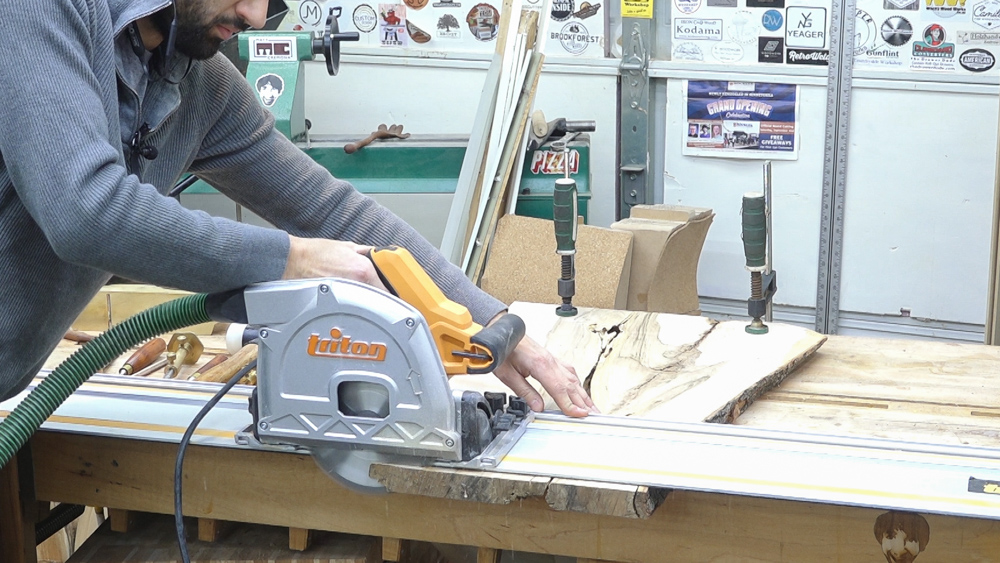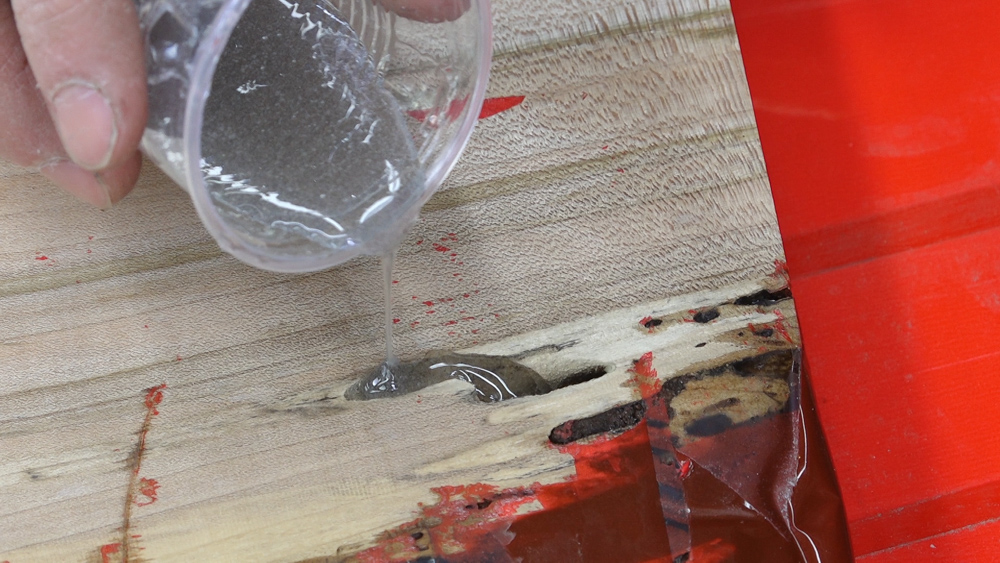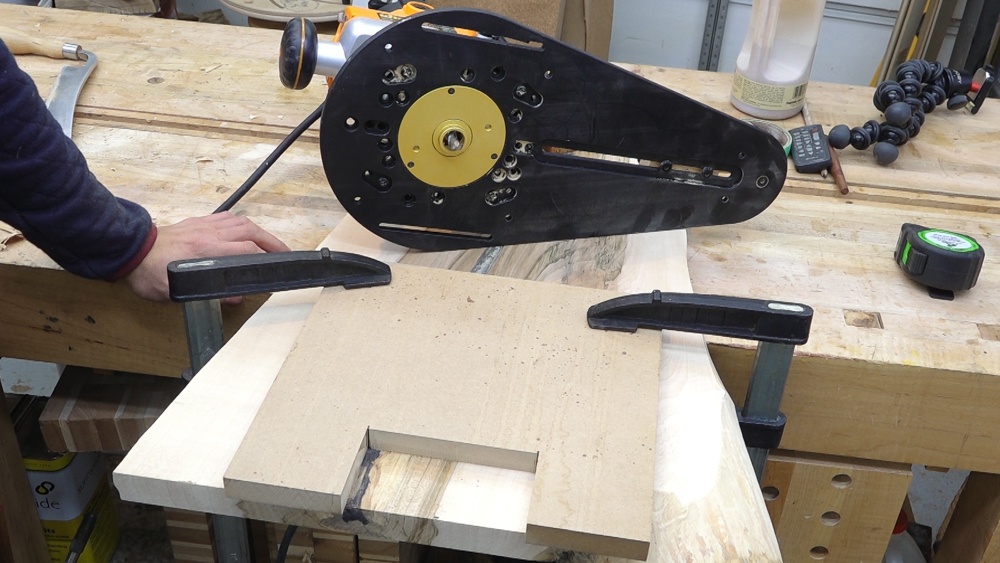
Kitchen Island, Barn Power – March 2024 Update
Welcome to my shop! This is a quick update to let you know what I’ve been up to. This big chunky thing is the leg
Over Thanksgiving my sister told me that she wanted a bigger serving board. The previous ones that I had made for her are too small for the extravagant spreads that she likes to put out.

I went looking though my small slab area and found this slab which will work well for this project. It’s from the first urban tree that I salvaged and cut with my chainsaw mill years ago. The tree was removed due to extensive ant damage and even in this upper canopy area, the ant damage was enough to split this slab in two.

With the slab split in two, it’s now easier to mill flat because it fits over my jointer. I’ll flatten one face of each half and then run them through the planer to mostly clean up the other face.

Back at the bench, I can clean up the ends to remove the archorseal and clean up the surface so the tape I’ll use to dam the epoxy will have an easier time forming a seal.

I decided on which side I would fill from and taped the two halves together from the opposite side. There is a larger crack through the crotch area that doesn’t go all the way through so the side with that crack will be the one I fill from.

I estimated the amount of epoxy I would need by assuming a 3/4″ wide gap down the length of the board. That came out to 14oz. I mixed 18 to make the mix ratio math easier and to give me some extra to fill the other voids in the board. I colored it with a bit of black powder pigment. I wanted a somewhat transparent look so you’d be able to see the ant tracks but not clearly see all the way through.

The epoxy that I’m using has a long set time which gives a lot of time for bubbles to naturally escape but since I have a vacuum chamber, I’ll help the degassing process along. I pull a vacuum for a few minutes which causes the bubbles to rise to the surface. I’ll release the vacuum and use a torch to pop them. I repeated that process 3 times until there were almost no bubbles remaining in the cup.

With minimal bubbles in the resin, now I just have to worry about bubbles being introduced during the pour. To help with that, I’ll find a spot in the crack where I can clearly pour the epoxy and have it hit the bottom, filling the crack from the bottom which will allow air to be pushed out the top and not be trapped in the epoxy.

I let the epoxy sit for 3 days. It wasn’t fully cured but it was cured enough to handle. I removed the clamps and tape so I could start doing any fills on the underside. I mixed up some faster setting West System and addressed a few voids on this face.

About a day later all the epoxy had fully set. I sanded off the excess epoxy on the underside and ran the board through the planer to clean up the remaining epoxy and to flush everything up. I also cleaned up the ends with a quick cut using the track saw.

Next I can address the live edge. I has some bark in a few places but most had fallen off or was pretty loose. I decided to remove the remaining bark using a drawknife and cleaning things up with some sandpaper.

The last detail is to add the handholds. These are recessed areas on the ends which give space for fingers to get under the board. I made a quick template at the table saw and used a guide bushing and straight bit in the router to router a pocket on each end.

A little finish sanding to clean everything up and some sanding to break the edges and it was time for finish. I used 3 coats of Salad Bowl Finish and after that had cured, I buffed on a coat of wax to even out the sheen and to smooth out the finish.
Products Used
Triton Track Saw: http://amzn.to/2f2P85l
Triton Router: http://amzn.to/2hXj5AC
1/2″ Spiral Bit: http://amzn.to/2iRhCvG
Ecopoxy Liquid Plastic: https://amzn.to/2JH5ezw
Black Pigment: https://amzn.to/34wKReI
Sheathing Tape: https://amzn.to/2GbIsyL
Vacuum Chamber: https://amzn.to/35xBa0Z
West System Epoxy Resin (Gallon): http://amzn.to/25TYH7y
West System Epoxy Slow Hardener (Quart): http://amzn.to/25TYKAr
Metering Pumps: http://amzn.to/1qicuEr
General Finishes Salad Bowl Finish: http://amzn.to/2epVFVz
Board Wax: https://socalwoodshop.com/product/socal-woodshop-board-wax-4oz-pre-order/


Welcome to my shop! This is a quick update to let you know what I’ve been up to. This big chunky thing is the leg

Welcome back to the home renovation. This time I’m going to be working on the kitchen island. Here is a small model of the island.

Welcome back to our home renovation. Today I am going to be working on this wall. It needs some upper cabinets and the surround for